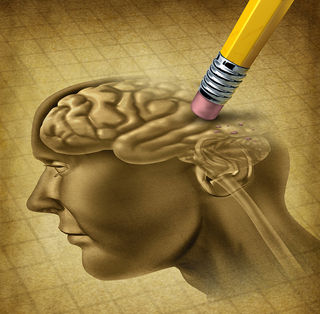
Meet Francis, he weighs over 500 pounds, and is lying in the Intensive Care Unit, or morgue, of any given American hospital. Francis is “a hot mess.” Francis might not be a food addict. He might be an alcoholic or another type of substance abuser - a sex addict, compulsive gambler in financial ruin, or have chronic episodic violence syndrome (serial killer, rapist) etc. “How did he become a hot mess he’s too smart and well brought up…” It happened because Francis’s brain is desperately trying to survive psychosocial pain that is so severe it threatens the survival of his psyche.
Genetics and Epigenetic Influences
Although genetics is a biological science, its essence is communication and revolves around, sharing and responding to information on a cellular basis that tells a 50,000-year-old tale articulating physical and behavioral information.[1-5]

Epigenetic factors influence how your genes are expressed. Your grandparents’ and parents’ social and cultural experiences have an epigenetic affect.[6-14] That is how suffering occurs in families – how the descendants of the Nazis pass the guilt of the holocaust from one generation to the next, and how the offspring of the Jews pass the devastation from parent to child.[15]
Think of genes as light switches, and recent ancestors’ experiences as the hand determining which switches to turn on, off, or to use a dimmer. Epigenetics affects how you store and recall memories, which determines your perception of threat and control, which is the architect of the kinds of behavior that make a person a “hot mess.”
Pre and perinatal contributions
When pregnant women experience stress, neurochemicals cross the placenta and influence the fundamental construction of the fetal Hypothalamic Pituitary Axis (HPA).[16, 17]When the structural integrity of an individual’s HPA is remodeled, its functionality is compromised. The HPA is the main engine of the fight-or-flight mechanism in humans and compromised HPA function contributes to obesity, inflammatory disease, behavioral and substance dependencies in various ways. [18-21]

After birth, the young brain observes its environment and wires itself to survive best in a world that it presumes will be like its observations. Psychological, emotional, and sexual abuse as well as environmental toxins, bad nutrition affect the structure and function to the hypothalamus and hippocampus (a key structure in learning, memory and hence perception). [22-30]
Social Currency
The final component is social experience. Early experiences in tandem with genetics contribute to our sense of self and worth. That’s the cake. Society’s ability to insinuate current social norms into our sense (or lack of) self is the frosting. Most social norms are consensual realities. Today’s supermodels might have been used as bear bait in an ancient society. Pretty, class, worth, are what we agree they are. However, we are a social species and being separated from the group was lethal for the ancients, so mass social subscriptions to consensual realities matter. We care what people think, even though people rarely think. .
Nobody wants to be thought of as ugly or worthless because it registers as the potential of becoming a social outcast in our Ventral Tegmental Area (VTA) which monitors social connectivity.[31-38] The perception of social connectivity is equivocal to the perception of safety to the old brain. Thus, what others think of us matters to the old brain, which does not think, and just reacts to cues. So living in a society that continuously tells you that you are less than is very traumatic.
Connecting the Dots

If you have extreme psychic pain, the brain will shut down communication channels for self-protection. [28, 39-47]When you shut out the bad, you also shut out the good, and worse yet, you decrease or eliminate the abilities of your informational substances, such as enzymes, hormones, neurotransmitters, to communicate. It’s like the soldiers who blow up a bridge to keep the enemy out… but regrettably it's the same bridge used to bring supplies.
In this case supplies are the neural substrates of self-awareness, i.e., you become a hot mess because you are desensitized to the events occurring in your body and your life. Survival is basic in the old mammal brain – get enough of the brain’s happy dance drugs (dopamine etc.) to get through the day by detecting the right cues. Remember the old brain’s mantra is – survive now ask questions later. Survive now – are the destructive behaviors – ask questions later is the deconstruction of your life. Intellectually, Francis understands the problem. But the reward circuitry, memory, and perception are subcortical, and not responsible to intellect. When the bridges are out this part of the brain cannot respond to the cues because they are not getting through.
So what then to do? Each person is different. The first step is realizing that any human in your position would have done exactly as you have done – so forgive yourself. Then you need to love and accept yourself just as you are - meaning step into the light and be proactive about who you are, and what the Universe intended for you, which is counterintuitive after years of being reactive to the darkness of who you are not. Then moment by moment, change will come. Remain fabulous and phenomenal.
Join my email list to receive notifications of new posts
Or visit me on:
UCLA Center for the Neurobiology of Stress
References
1. Diabetes and socioeconomic status. Natl Bur Econ Res Bull Aging Health, 2007(20): p. 3.
2. Mind your heart. Nat Med, 2002. 8(4): p. 305.
3. Aabenhus, R., et al., Delineation of Campylobacter concisus genomospecies by amplified fragment length polymorphism analysis and correlation of results with clinical data. J Clin Microbiol, 2005. 43(10): p. 5091-6.
4. Abate, N. and M. Chandalia, The impact of ethnicity on type 2 diabetes. J Diabetes Complications, 2003. 17(1): p. 39-58.
5. Abraham, N.G., et al., Heme oxygenase: a target gene for anti-diabetic and obesity. Curr Pharm Des, 2008. 14(5): p. 412-21.
6. Alegria-Torres, J.A., A. Baccarelli, and V. Bollati, Epigenetics and lifestyle. Epigenomics, 2011. 3(3): p. 267-77.
7. Annila, A. and K. Baverstock, Genes without prominence: a reappraisal of the foundations of biology. J R Soc Interface, 2014. 11(94): p. 20131017.
8. Archer, T., et al., Neurogenetics and Epigenetics in Impulsive Behaviour: Impact on Reward Circuitry. J Genet Syndr Gene Ther, 2012. 3(3): p. 1000115.
9. Auger, C.J. and A.P. Auger, Permanent and plastic epigenesis in neuroendocrine systems. Front Neuroendocrinol, 2013. 34(3): p. 190-7.
10. Ferrari, P.F., et al., Mirror neurons through the lens of epigenetics. Trends Cogn Sci, 2013. 17(9): p. 450-7.
11. Gottesman, II and D.R. Hanson, Human development: biological and genetic processes. Annu Rev Psychol, 2005. 56: p. 263-86.
12. Kirkbride, J.B., et al., Prenatal nutrition, epigenetics and schizophrenia risk: can we test causal effects? Epigenomics, 2012. 4(3): p. 303-15.
13. Lopez-Jaramillo, P., P.A. Camacho, and L. Forero-Naranjo, The role of environment and epigenetics in hypertension. Expert Rev Cardiovasc Ther, 2013. 11(11): p. 1455-7.
14. Szyf, M., Mind-body interrelationship in DNA methylation. Chem Immunol Allergy, 2012. 98: p. 85-99.
15. Candib, L.M., Working with suffering. Patient Educ Couns, 2002. 48(1): p. 43-50.
16. Entringer, S. and P.D. Wadhwa, Developmental programming of obesity and metabolic dysfunction: role of prenatal stress and stress biology. Nestle Nutr Inst Workshop Ser, 2013. 74: p. 107-20.
17. Reynolds, R.M., et al., Transmitting biological effects of stress in utero: implications for mother and offspring. Psychoneuroendocrinology, 2013. 38(9): p. 1843-9.
18. Ahmed, S.H., et al., Gene expression evidence for remodeling of lateral hypothalamic circuitry in cocaine addiction. Proc Natl Acad Sci U S A, 2005. 102(32): p. 11533-8.
19. Langle, S.L., D.A. Poulain, and D.T. Theodosis, Neuronal-glial remodeling: a structural basis for neuronal-glial interactions in the adult hypothalamus. J Physiol Paris, 2002. 96(3-4): p. 169-75.
20. Miller, A.A. and S.J. Spencer, Obesity and neuroinflammation: A pathway to cognitive impairment. Brain Behav Immun, 2014.
21. Romeo, R.D. and B.S. McEwen, Stress and the adolescent brain. Ann N Y Acad Sci, 2006. 1094: p. 202-14.
22. Aisa, B., et al., Effects of neonatal stress on markers of synaptic plasticity in the hippocampus: implications for spatial memory. Hippocampus, 2009. 19(12): p. 1222-31.
23. Anand, K.J., Effects of perinatal pain and stress. Prog Brain Res, 2000. 122: p. 117-29.
24. Bath, K.G., A. Schilit, and F.S. Lee, Stress effects on BDNF expression: effects of age, sex, and form of stress. Neuroscience, 2013. 239: p. 149-56.
25. Berry, A., E. Bindocci, and E. Alleva, NGF, brain and behavioral plasticity. Neural Plast, 2012. 2012: p. 784040.
26. Cirulli, F., et al., Early life stress as a risk factor for mental health: role of neurotrophins from rodents to non-human primates. Neurosci Biobehav Rev, 2009. 33(4): p. 573-85.
27. Cools, R. and T.W. Robbins, Chemistry of the adaptive mind. Philos Trans A Math Phys Eng Sci, 2004. 362(1825): p. 2871-88.
28. McEwen, B.S., Stress and hippocampal plasticity. Annu Rev Neurosci, 1999. 22: p. 105-22.
29. McEwen, B.S., Hormones and the plasticity of neurons. Clin Neuropharmacol, 1992. 15 Suppl 1 Pt A: p. 582A-583A.
30. McEwen, B.S., Early life influences on life-long patterns of behavior and health. Ment Retard Dev Disabil Res Rev, 2003. 9(3): p. 149-54.
31. Bardo, M.T., Neuropharmacological mechanisms of drug reward: beyond dopamine in the nucleus accumbens. Crit Rev Neurobiol, 1998. 12(1-2): p. 37-67.
32. Blake, M.J., E.A. Stein, and D.A. Czech, Drinking-induced alterations in reward pathways: an in vivo autoradiographic analysis. Brain Res, 1987. 413(1): p. 111-9.
33. Bossert, J.M., et al., A role of ventral tegmental area glutamate in contextual cue-induced relapse to heroin seeking. J Neurosci, 2004. 24(47): p. 10726-30.
34. Bourdy, R. and M. Barrot, A new control center for dopaminergic systems: pulling the VTA by the tail. Trends Neurosci, 2012. 35(11): p. 681-90.
35. Boye, S.M., Mesencephalic substrate of reward: lesion effects. Behav Brain Res, 2005. 156(1): p. 31-43.
36. Boye, S.M., C. Contant, and P.P. Rompre, Mesencephalic substrate of reward: possible role for lateral pontine tegmental cells. Brain Res, 2002. 949(1-2): p. 188-96.
37. Briand, L.A., et al., Ventral tegmental afferents in stress-induced reinstatement: the role of cAMP response element-binding protein. J Neurosci, 2010. 30(48): p. 16149-59.
38. Cooper, D.C., et al., A role for the subiculum in the brain motivation/reward circuitry. Behav Brain Res, 2006. 174(2): p. 225-31.
39. Berry, E.M. and S. De Geest, Tell me what you eat and I will tell you your sociotype: coping with diabesity. Rambam Maimonides Med J, 2012. 3(2): p. e0010.
40. Epel, E., et al., Social status, anabolic activity, and fat distribution. Ann N Y Acad Sci, 1999. 896: p. 424-6.
41. Goldstein, D.S. and B. McEwen, Allostasis, homeostats, and the nature of stress. Stress, 2002. 5(1): p. 55-8.
42. Goodman, E., et al., Social inequalities in biomarkers of cardiovascular risk in adolescence. Psychosom Med, 2005. 67(1): p. 9-15.
43. Juster, R.P., et al., A transdisciplinary perspective of chronic stress in relation to psychopathology throughout life span development. Dev Psychopathol, 2011. 23(3): p. 725-76.
44. Juster, R.P., B.S. McEwen, and S.J. Lupien, Allostatic load biomarkers of chronic stress and impact on health and cognition. Neurosci Biobehav Rev, 2010. 35(1): p. 2-16.
45. Korte, S.M., et al., The Darwinian concept of stress: benefits of allostasis and costs of allostatic load and the trade-offs in health and disease. Neurosci Biobehav Rev, 2005. 29(1): p. 3-38.
46. McEwen, B., Lasley, E, End of Stress as we know it. 2002, Washington, D.C.: Joseph Henry Press.
47. McEwen, B. and E.N. Lasley, Allostatic load: when protection gives way to damage. Adv Mind Body Med, 2003. 19(1): p. 28-33.




